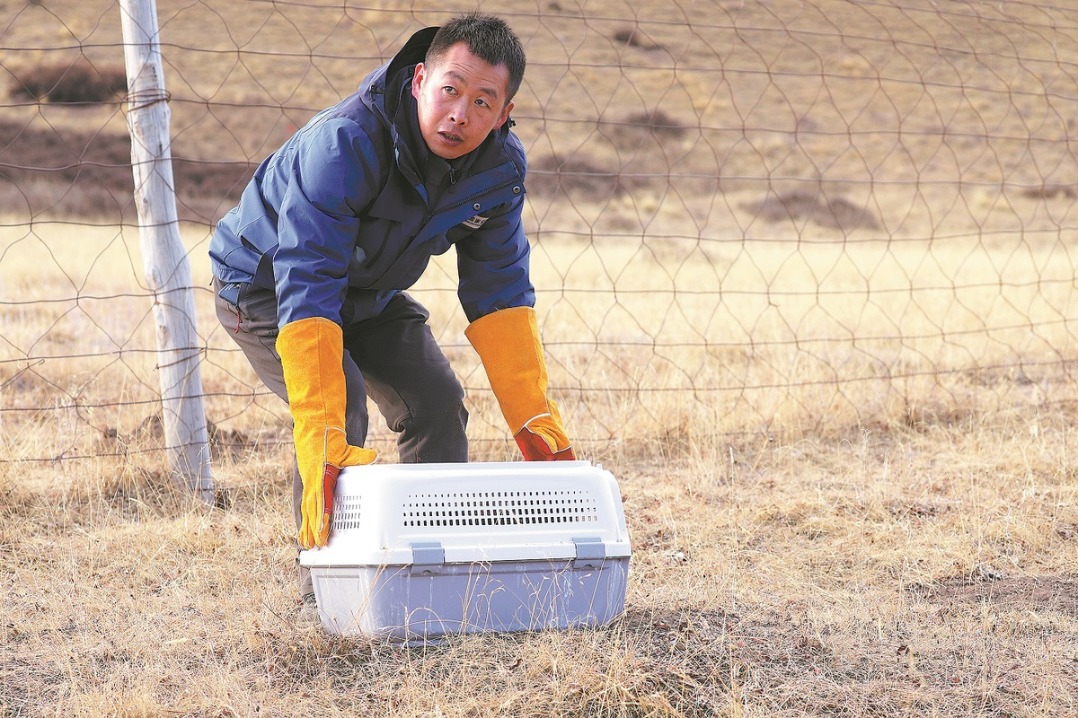Deep learning model identifies invasive seeds

In the battle against invasive species, researchers in China have developed a groundbreaking deep learning model that significantly improves the accuracy and efficiency of identifying invasive plant seeds, providing vital support for national quarantine, agriculture and ecological protection efforts.
Invasive species are a growing global threat to both ecological systems and economic stability. China, in particular, has seen a dramatic rise in related challenges, intercepting nearly 400 invasive species annually and handling around 70,000 quarantine cases each year. The task of identifying these invasive seeds is daunting, calling for prompt and precise identification to prevent harm to ecosystems, the economy, and society at large.
However, traditional methods of identifying and preventing the entry of invasive species rely heavily on the extensive experience of a limited number of specialists. These methods are time-consuming and often struggle to distinguish seeds with similar morphological features.
To address this, a research team from the Zhejiang Sci-Tech University and Shanghai Chenshan Botanical Garden has been pioneering the development of automated seed identification technologies based on deep learning. In 2022, the team achieved a major milestone by creating a deep learning target detection algorithm capable of rapid seed classification with an accuracy of up to 93.96 percent.
Building on this success, the researchers released an even more powerful model earlier this year, which achieved an overall accuracy of 99.10 percent in classifying seeds — even those with highly similar morphologies. Their groundbreaking work, titled "High-accuracy classification of invasive weed seeds with highly similar morphologies: Utilizing hierarchical bilinear pooling for fine-grained image classification", was recently published in the international journal Smart Agricultural Technology.
Yang Lianghai, the lead author and a graduate student jointly trained by Zhejiang Sci-Tech University and the Shanghai Chenshan Botanical Garden, shared insights into the project in an interview with China Daily.
"The model we developed in 2022 laid the foundation for a practical mobile application that could enable quarantine officers to scan and identify seeds directly with their smartphones," Yang explained. "It marked an initial demonstration of how deep learning could transform invasive seed identification by boosting both speed and accuracy."
While the early model was a promising step forward, Yang said that it faced notable limitations. "It struggled to distinguish seeds with extremely similar appearances, and the limited size of our image dataset also constrained its performance," he said. "To address this, we systematically expanded our database by collecting seed images from 168 invasive plant species across 33 families and 91 genera, captured under various environmental conditions and angles to better represent real-world complexity."
Building on this expanded dataset, the team designed a novel image classification model based on hierarchical bilinear pooling — a technique that combines features across multiple levels to better capture subtle distinctions in texture, shape and surface structure of seeds.
The result was a dramatic leap in performance. The new model achieved an overall classification accuracy of 99.10 percent. Even for seeds smaller than 1 millimeter or those with highly similar appearances — such as species from the Amaranthus or Euphorbia genera — classification accuracies remained impressively high, often exceeding 97 percent.
"This breakthrough greatly improves the efficiency and reliability of invasive seed identification," said Jiang Min, another member of the research team. "It provides a practical tool for frontline personnel in customs, agriculture and conservation to capture high-resolution seed images and use our model to quickly determine whether a specimen belongs to a regulated invasive species."
Jiang added: "Our two models serve different but complementary purposes. One offers fast and user-friendly operation for field applications, while the other ensures high accuracy when dealing with complex or ambiguous cases."
Currently, both models are based on two-dimensional seed images, she said. "In the future, we aim to develop three-dimensional image recognition systems to more comprehensively integrate various seed characteristics and further enhance identification accuracy," Jiang said.
As international trade accelerates, the risk of introducing invasive plant species continues to rise. This artificial intelligence-driven approach strengthens biosecurity while maintaining trade efficiency, Jiang said. By combining innovation with practical application, she said that the technology supports broader use in customs, agriculture, and ecological monitoring.
"It advances our national efforts to safeguard biodiversity and build ecological resilience, while offering a scalable and transferable solution for other countries," said Yan Xiaoling, the principal investigator of the team from Shanghai Chenshan Botanical Garden.
chenliang@chinadaily.com.cn
- Documentary spotlights a daring World War II rescue operation in Hainan
- Buddhist body backs Shaolin Temple's former abbot's investigation
- Mainland rebukes Lai for inciting division, glorifying aggression
- AI-animated film promotes China's ecological conservation model to the world
- Taiwan compatriots feel patriotic spirit in Xiamen
- A video message to the war heroes at V-Day parade





































